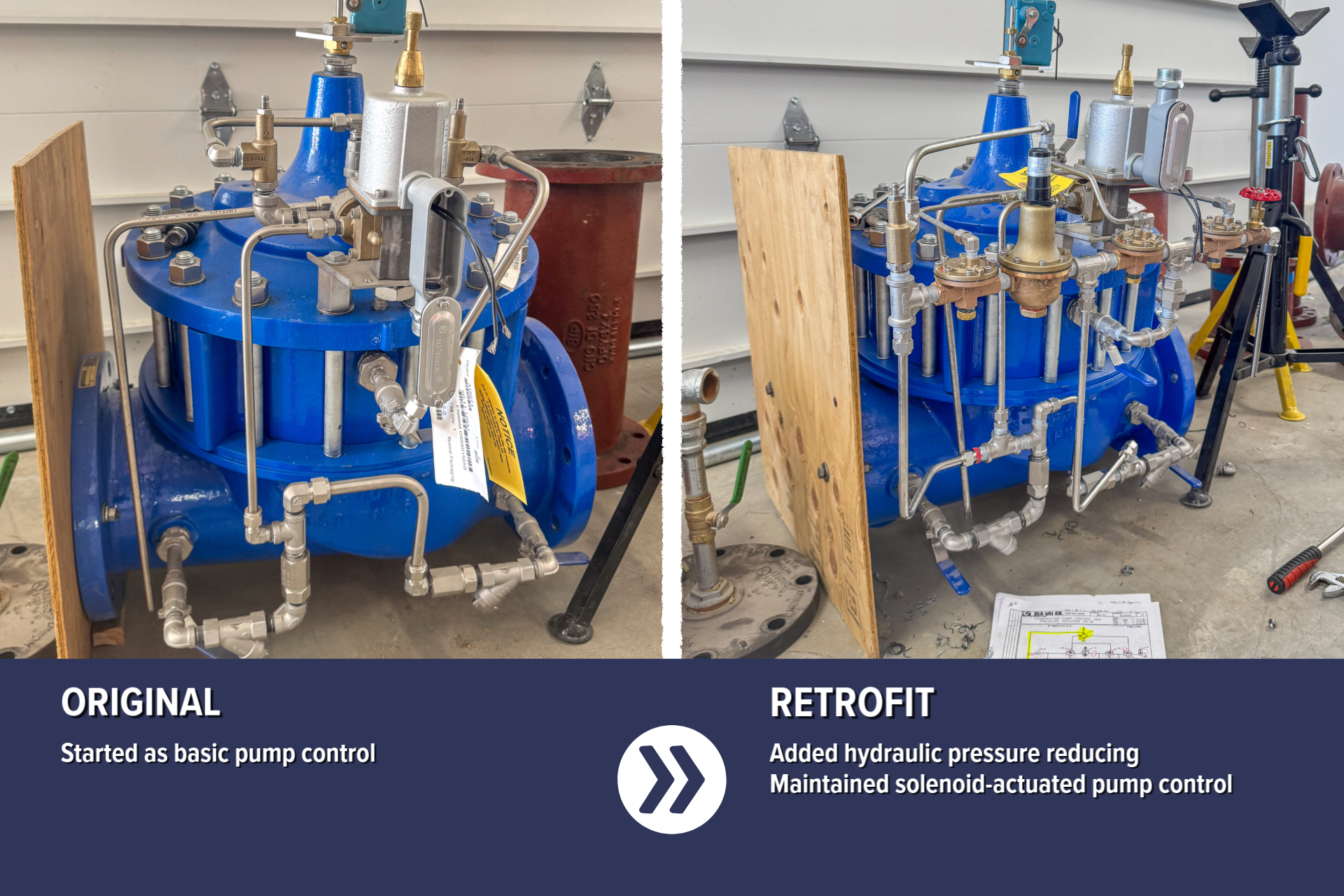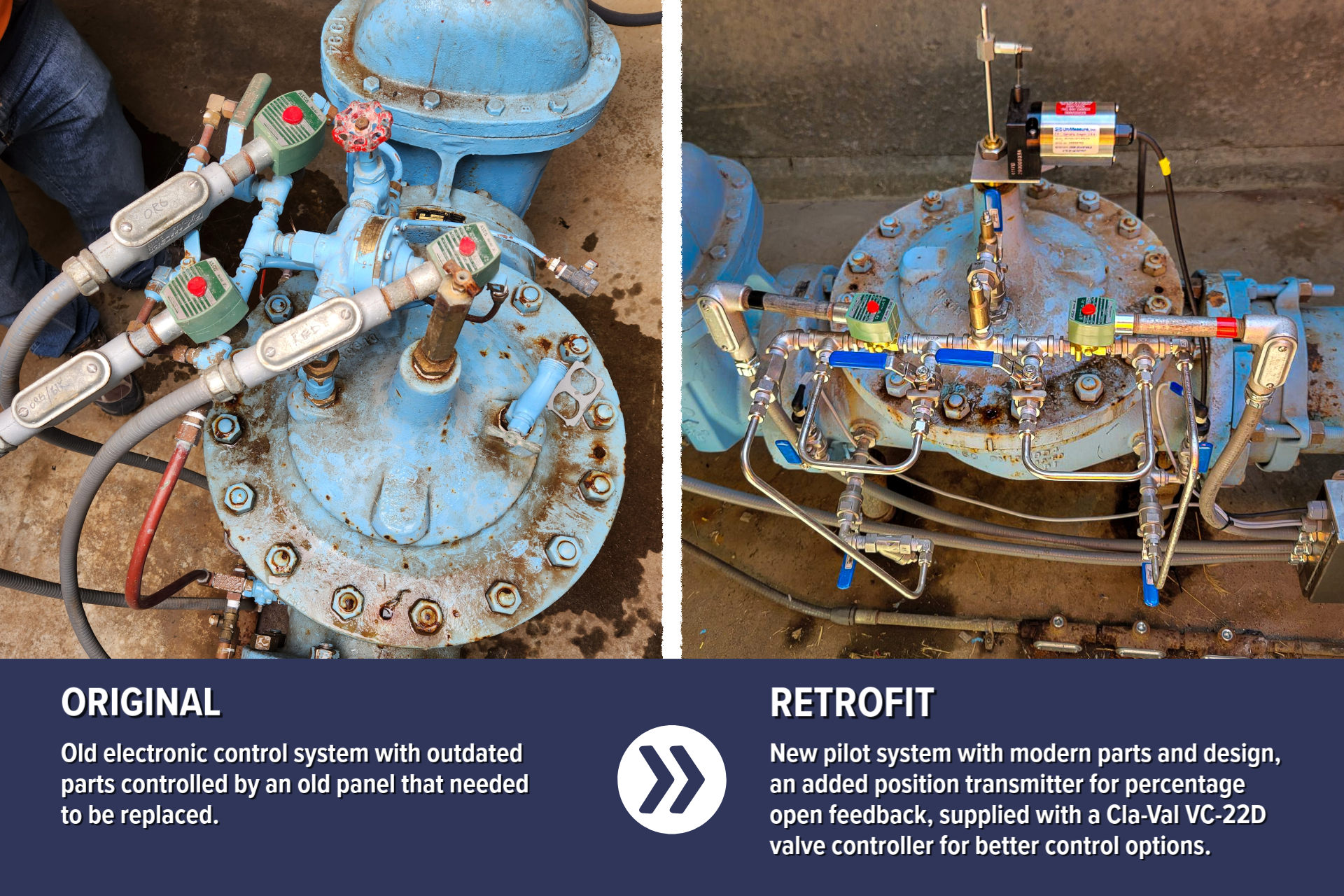When your system needs to do more, you might think it’s time to buy a new valve. But here’s the thing: your existing valve might already be capable of far more than you think. Because control valves consist of a base valve body and a customizable pilot control system, they are highly flexible and modifiable. With the right retrofit, a valve that once handled only one function will be able to manage several. Imagine a pressure reducing valve that, with a new pilot system and added electronics, is now equipped for pressure reducing, pressure sustaining and provides electronic flow control. That’s just one of literally tens of thousands of possibilities!
Retrofitting isn’t just flexible, it's often the smarter path. Compared to a full valve replacement, it can be:
More cost-effective. Reusing the main valve body can reduce the overall cost.
Less invasive. Since retrofits happen on the pilot systems (not the main body), everything is external, so there’s no need to remove the valve from the line.
Surprisingly fast. Many upgrades can be done in a matter of hours without major disruption.
If you’re considering adding a valve or replacing one because you need more functionality, it’s worth pausing to ask: could a retrofit get you there instead?
There are three primary approaches to retrofitting a valve, and which one makes sense depends on your system, your expertise, and your goals.
The Three Approaches:
1. Buy the parts and retrofit yourself
This is the most hands-on approach. It involves purchasing the specific missing components and reworking your valve’s pilot system.
Advantages:
Lowest cost for parts when you reuse components of your existing pilot system.
Allows for customization if you or your team have strong technical expertise.
Challenges:
Requires bending and installing new tubing.
A high level of know-how is required. If the pilot system isn’t rebuilt correctly, the valve won’t perform as expected.
Can be labor-intensive, especially if converting multiple valves.
This option makes sense if you have skilled staff familiar with Cla-Val systems and you’re confident in building pilot systems in the field.
2. Replace with a pre-builT pilot kit
With this option, you remove the existing pilot system entirely and replace it with a factory-built kit from Cla-Val. Everything comes assembled and ready to connect to your valve: the right pilots, all the fittings, and installation-ready tubing.
Advantages:
Much easier on labor. Installation is straightforward.
A great choice if your current system is aging or in poor condition.
Ensures factory-quality assembly.
Challenges:
Higher upfront cost since no existing parts are reused.
Less flexibility. May not be an ideal arrangement of components for your space.
This is often the best choice when you want simplicity, speed, and reliability.
3. Hire our team to retrofit for you
Sometimes the smartest move is to bring in the experts. With this approach, our team handles the entire process, deciding whether to reuse existing components, order a new pilot kit, or build a hybrid solution that fits your system best.
Advantages:
You get the benefit of experienced technicians who know what to look for.
Factory-authorized startup and assurance that the valve will function as intended.
The flexibility of reusing parts where possible, saving on unnecessary costs.
Especially valuable for complex valves or critical applications.
Challenges:
Often the most expensive option if treated as a standalone service.
That said, if we’re already onsite for other service work, adding a retrofit can be more cost-efficient.
This option is ideal when you need peace of mind, when the system is complicated, or when your team simply doesn’t have time to take on the project.
Conclusion
Retrofitting can unlock powerful new capabilities from the valves you already have, and save time, money, and hassle compared to full replacements. Which approach makes sense depends on your expertise, budget, and the complexity of the changes you want to make. As a rule of thumb, if you’re dramatically changing the function of the valve, skip the parts-only route and look at kits or professional retrofit.
Lean On Our Team
Not sure which is right for your system? Our team can walk you through the options, provide a cost breakdown of each, and help you make the best decision for your operation. Give us a call–we’re here to help you get the most out of your valves.



